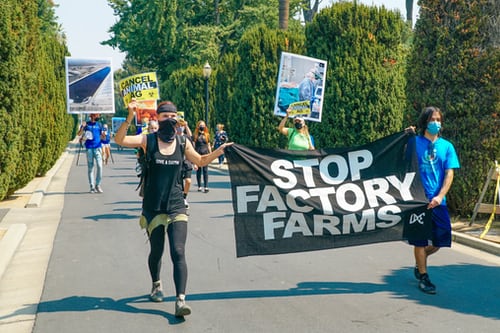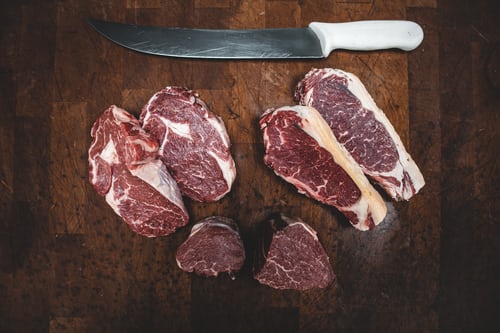MEAT
Study: Lots of red meat increases mortality risk
By CARLA K. JOHNSON, AP Medical Writer Carla K. Johnson, Ap Medical Writer
Reuters – Butcher fest in Hungary
CHICAGO – The largest study of its kind finds that older Americans who eat large amounts of red meat and processed meats face a greater risk of death from heart disease and cancer. The federal study of more than half a million men and women bolsters prior evidence of the health risks of diets laden with red meat like hamburger and processed meats like hot dogs, bacon and cold cuts.
Calling the increased risk modest, lead author Rashmi Sinha of the National Cancer Institute said the findings support the advice of several health groups to limit red and processed meat intake to decrease cancer risk.
The findings appear in Monday’s Archives of Internal Medicine.
Over 10 years, eating the equivalent of a quarter-pound hamburger daily gave men in the study a 22 percent higher risk of dying of cancer and a 27 percent higher risk of dying of heart disease. That’s compared to those who ate the least red meat, just 5 ounces per week.
Women who ate large amounts of red meat had a 20 percent higher risk of dying of cancer and a 50 percent higher risk of dying of heart disease than women who ate less.
For processed meats, the increased risks for large quantities were slightly lower overall than for red meat. The researchers compared deaths in the people with the highest intakes to deaths in people with the lowest to calculate the increased risk.
People whose diets contained more white meat like chicken and fish had lower risks of death.
The researchers surveyed more than 545,000 people, ages 50 to 71 years old, on their eating habits, then followed them for 10 years. There were more than 70,000 deaths during that time.
Study subjects were recruited from AARP members, a group that’s healthier than other similarly aged Americans. That means the findings may not apply to all groups, Sinha said. The study relied on people’s memory of what they ate, which can be faulty.
In the analysis, the researchers took into account other risk factors such as smoking, family history of cancer and high body mass index.
In an accompanying editorial, Barry Popkin, director of the Interdisciplinary Obesity Center at the University of North Carolina at Chapel Hill, wrote that reducing meat intake would have benefits beyond improved health.
Livestock increase greenhouse gas emissions, contributing to global warming, he wrote, and nations should reevaluate farm subsidies that distort prices and encourage meat-based diets.
“We’ve promoted a diet that has added excessively to global warming,” Popkin said in an interview.
Successfully shifting away from red meat can be as easy as increasing fruits and vegetables in the diet, said Elisabetta Politi of the Duke Diet and Fitness Center in Durham, N.C.
“I’m not saying everybody should turn into vegetarians,” Politi said. “Meat should be a supporting actor on the plate, not the main character.”
The National Pork Board and National Cattlemen’s Beef Association questioned the findings.
Dietitian Ceci Snyder said in a statement for the pork board that the study “attempts to indict all red meat consumption by looking at extremes in meat consumption, as opposed to what most Americans eat.”
Lean meat as part of a balanced diet can prevent chronic disease, along with exercise and avoiding smoking, said Shalene McNeill, dietitian for the beef group.


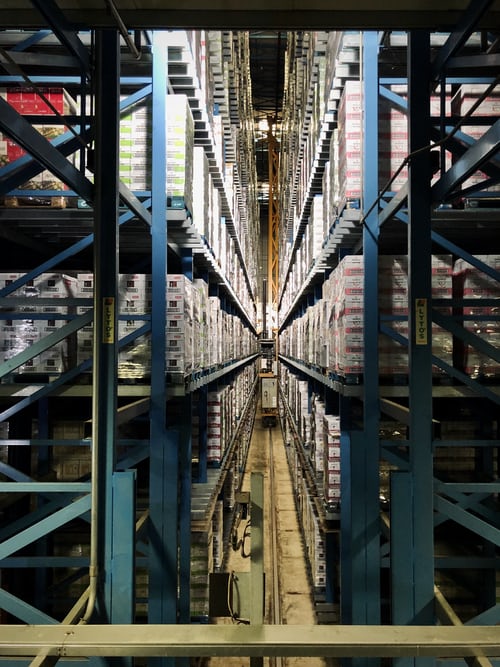



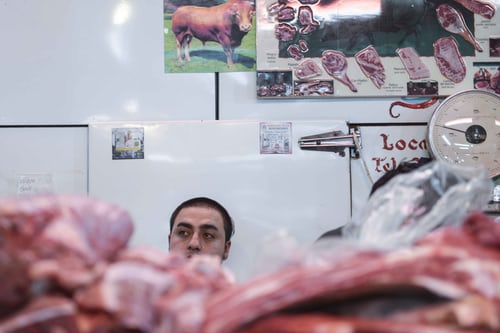


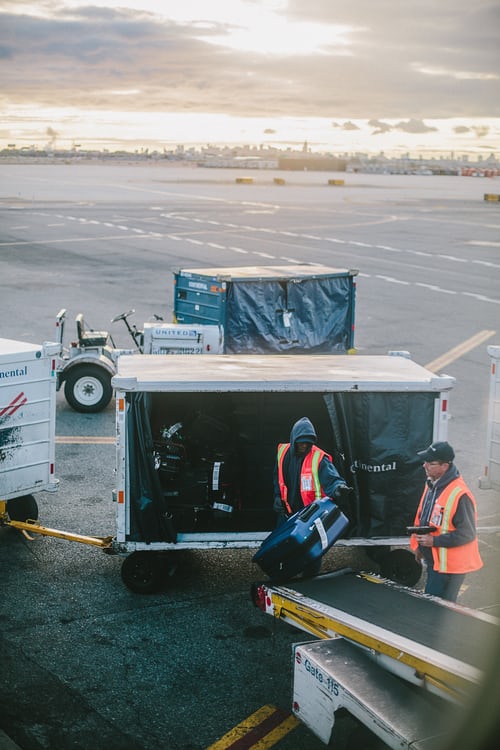
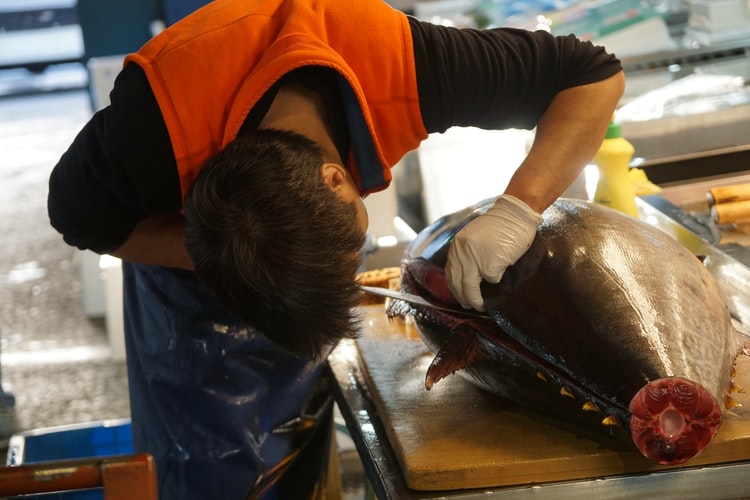
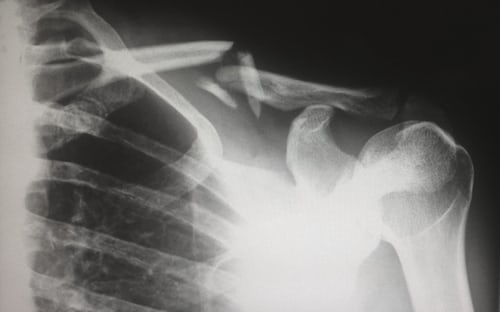



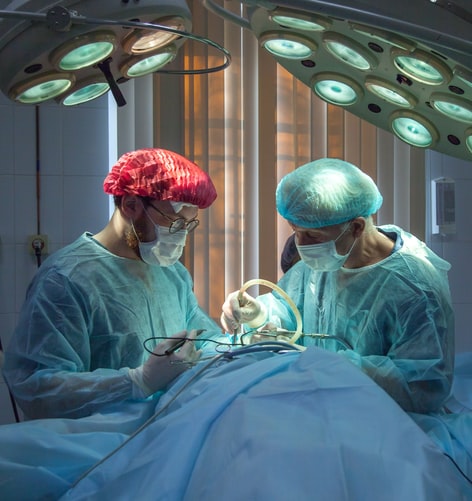
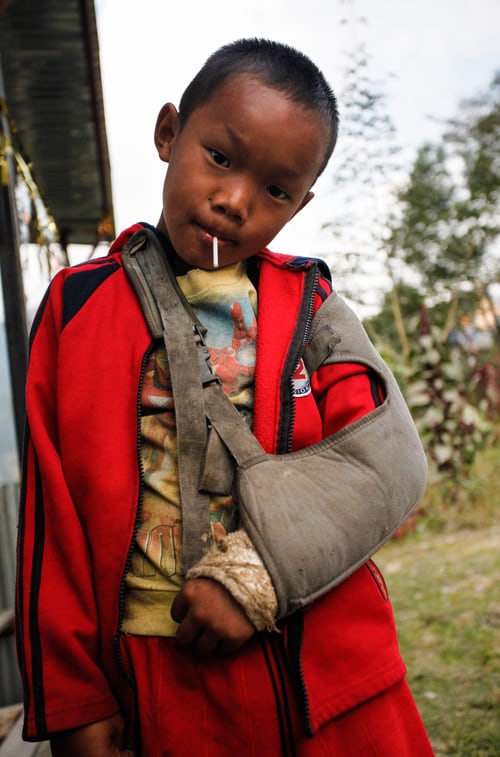

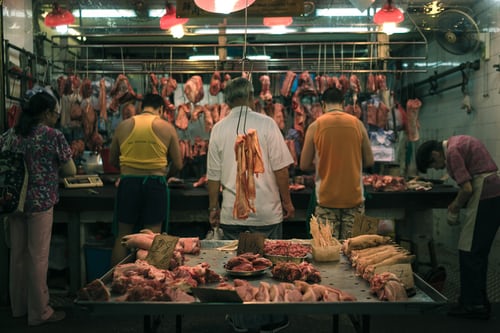
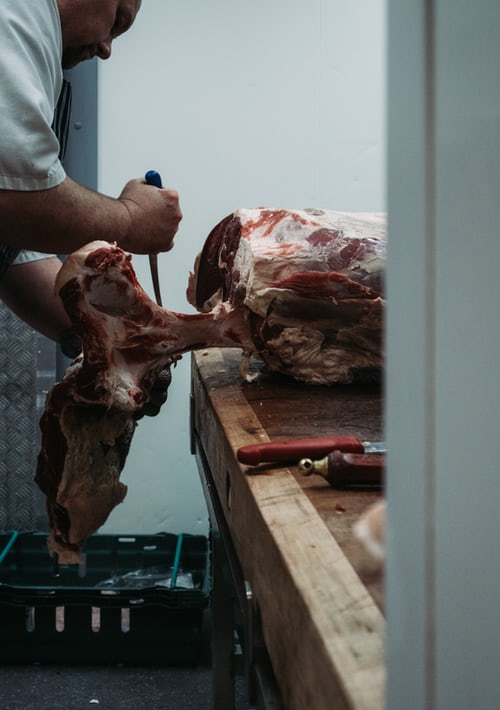








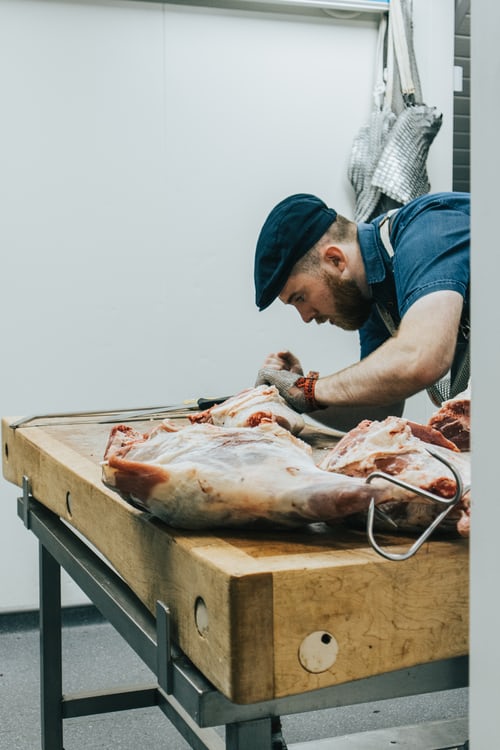


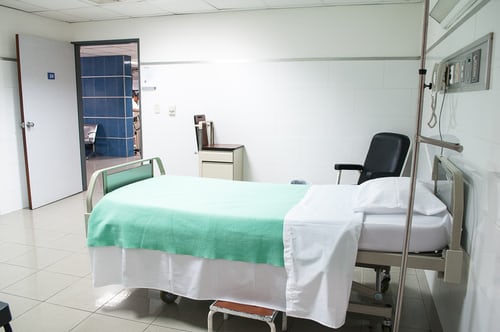
The Swine Flu Crisis Lays Bare the Meat Industry’s Monstrous Power
By Mike Davis
Posted on April 28, 2009, Printed on May 2, 2009
The Mexican swine flu, a genetic chimera probably conceived in the faecal mire of an industrial pigsty, suddenly threatens to give the whole world a fever. The initial outbreaks across North America reveal an infection already travelling at higher velocity than did the last official pandemic strain, the 1968 Hong Kong flu.
Stealing the limelight from our officially appointed assassin, H5N1, this porcine virus is a threat of unknown magnitude. It seems less lethal than Sars in 2003, but as an influenza it may be more durable than Sars. Given that domesticated seasonal type-A influenzas kill as many one million people a year, even a modest increment of virulence, especially if combined with high incidence, could produce carnage equivalent to a major war.
Meanwhile, one of its first victims has been the consoling faith, long preached by the World Health Organisation, that pandemics can be contained by the rapid responses of medical bureaucracies, independent of the quality of local public health. Since the initial H5N1 deaths in Hong Kong in 1997, the WHO, with the support of most national health services, has promoted a strategy focused on the identification and isolation of a pandemic strain within its local radius of outbreak, followed by a thorough dousing of the population with antivirals and (if available) vaccine.
An army of sceptics has contested this viral counter-insurgency approach, pointing out that microbes can now fly around the world (quite literally in the case of avian flu) faster than WHO or local officials can react to the original outbreak. They also pointed to the primitive, often non-existent surveillance of the interface between human and animal diseases. But the mythology of bold, preemptive (and cheap) intervention against avian flu has been invaluable to the cause of rich countries, like the US and UK, who prefer to invest in their own biological Maginot lines rather than dramatically increasing aid to epidemic frontlines overseas, as well as to big pharma, which has battled developing-world demands for the generic, public manufacture of critical antivirals like Roche’s Tamiflu.
The swine flu may prove that the WHO/Centres for Disease Control version of pandemic preparedness – without massive new investment in surveillance, scientific and regulatory infrastructure, basic public health, and global access to lifeline drugs – belongs to the same class of Ponzified risk management as Madoff securities. It is not so much that the pandemic warning system has failed as it simply doesn’t exist, even in North America and the EU.
Perhaps it is not surprising that Mexico lacks both capacity and political will to monitor livestock diseases, but the situation is hardly better north of the border, where surveillance is a failed patchwork of state jurisdictions, and corporate livestock producers treat health regulations with the same contempt with which they deal with workers and animals. Similarly, a decade of urgent warnings by scientists has failed to ensure the transfer of sophisticated viral assay technology to the countries in the direct path of likely pandemics. Mexico has world-famous disease experts, but it had to send swabs to a Winnipeg lab in order to ID the strain’s genome. Almost a week was lost as a consequence.
But no one was less alert than the disease controllers in Atlanta. According to the Washington Post, the CDC did not learn about the outbreak until six days after Mexico had begun to impose emergency measures. There should be no excuses. The paradox of this swine flu panic is that, while totally unexpected, it was accurately predicted. Six years ago, Science dedicated a major story to evidence that “after years of stability, the North American swine flu virus has jumped onto an evolutionary fasttrack.”
Since its identification during the Great Depression, H1N1 swine flu had only drifted slightly from its original genome. Then in 1998 a highly pathogenic strain began to decimate sows on a farm in North Carolina and new, more virulent versions began to appear almost yearly, including a variant of H1N1 that contained the internal genes of H3N2 (the other type-A flu circulating among humans).
Researchers interviewed by Science worried that one of these hybrids might become a human flu (both the 1957 and 1968 pandemics are believed to have originated from the mixing of bird and human viruses inside pigs), and urged the creation of an official surveillance system for swine flu: an admonition, of course, that went unheeded in a Washington prepared to throw away billions on bioterrorism fantasies.
But what caused this acceleration of swine flu evolution? Virologists have long believed that the intensive agricultural system of southern China is the principal engine of influenza mutation: both seasonal “drift” and episodic genomic “shift.” But the corporate industrialisation of livestock production has broken China’s natural monopoly on influenza evolution. Animal husbandry in recent decades has been transformed into something that more closely resembles the petrochemical industry than the happy family farm depicted in school readers.
In 1965, for instance, there were 53m US hogs on more than 1m farms; today, 65m hogs are concentrated in 65,000 facilities. This has been a transition from old-fashioned pig pens to vast excremental hells, containing tens of thousands of animals with weakened immune systems suffocating in heat and manure while exchanging pathogens at blinding velocity with their fellow inmates.
Last year a commission convened by the Pew Research Center issued a report on “industrial farm animal production” that underscored the acute danger that “the continual cycling of viruses … in large herds or flocks [will] increase opportunities for the generation of novel virus through mutation or recombinant events that could result in more efficient human to human transmission.” The commission also warned that promiscuous antibiotic use in hog factories (cheaper than humane environments) was sponsoring the rise of resistant staph infections, while sewage spills were producing outbreaks of E coli and pfiesteria (the protozoan that has killed 1bn fish in Carolina estuaries and made ill dozens of fishermen).
Any amelioration of this new pathogen ecology would have to confront the monstrous power of livestock conglomerates such as Smithfield Farms (pork and beef) and Tyson (chickens). The commission reported systemic obstruction of their investigation by corporations, including blatant threats to withhold funding from cooperative researchers .
This is a highly globalised industry with global political clout. Just as Bangkok-based chicken giant Charoen Pokphand was able to suppress enquiries into its role in the spread of bird flu in southeast Asia, so it is likely that the forensic epidemiology of the swine flu outbreak will pound its head against the corporate stonewall of the pork industry.
This is not to say that a smoking gun will never be found: there is already gossip in the Mexican press about an influenza epicentre around a huge Smithfield subsidiary in Veracruz state. But what matters more (especially given the continued threat of H5N1) is the larger configuration: the WHO’s failed pandemic strategy, the further decline of world public health, the stranglehold of big pharma over lifeline medicines, and the planetary catastrophe of industrialised and ecologically unhinged livestock production.
Mike Davis is professor of history at the University of California, Irvine, and the author of The Monster at Our Door: The Global Threat of Avian Flu.
© 2009 All rights reserved.
View this story online at: http://www.alternet.org/story/138798/
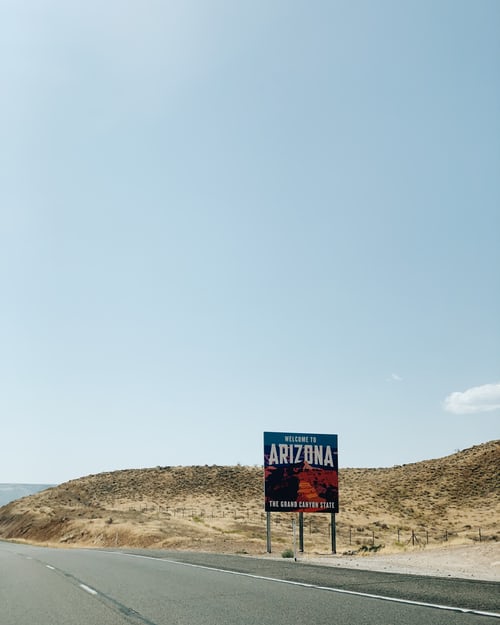
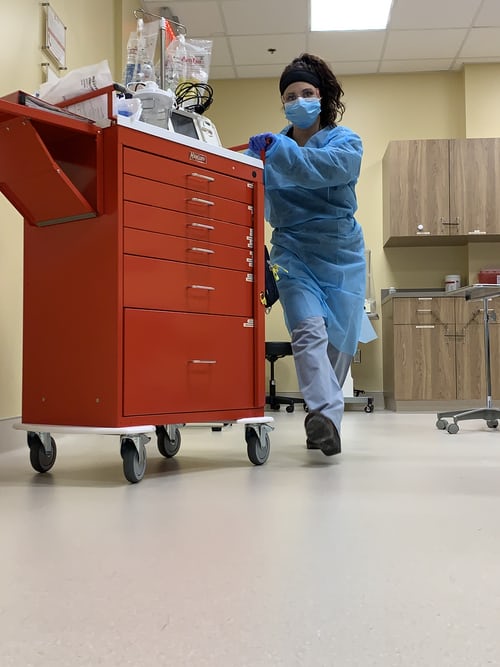





Red Meat or Chicken? Why It’s Wise to Stay Away from Both
By Kathy Freston, AlterNet
Posted on April 16, 2009, Printed on April 21, 2009
Nicholas Kristof’s column on Wednesday discusses the recent work by animal activists on behalf of chickens and pigs, and the degree to which “animal rights are now firmly on the mainstream ethical agenda” in the United States, as they have been for some years in Europe. I am delighted to see from Mr. Kristof yet another thoughtful essay about a moral issue that is, until recently, not widely discussed, and even more pleased that in discussing the cruelties of modern intensive farms, he is focusing on birds.
You see, people often tell me that they’ve given up eating red meat out of concern for animals, the environment, or their health (or all three). Of course all efforts to make the world a kinder and less polluted place should be applauded. But here’s the thing: cutting out red meat while still eating chicken doesn’t address the whole problem.
Here’s why: Both choices — beef and chicken — badly damage the environment, so choosing one or the other is sort of like the difference between driving a huge SUV and a Hummer. That’s also why I’m a little baffled when some environmental organizations say that cutting out beef is advisable, but eating other meats is “relatively” ok. It’s really not.
On the issue of global warming, all animal agriculture is a nightmare, relative to producing grains and beans. In a 400 page report from the United Nation’s Food and Agricultural Organization, Livestock’s Long Shadow, scientists conclude that the business of raising animals for food is responsible for about 18 percent of all warming — in fact meat causes about 40 percent more warming than all cars, trucks, and planes combined.
That is in part because turning animals into meat requires many stages of (energy intensive and polluting) production (i.e., transporting feed, animals, and meat; running feed mills, factory farms, and slaughterhouses; refrigerating carcasses during transport and in grocery stores — chickens are at least as energy consumptive as cattle for all these stages), compared to plant foods.
Environmental Defense calculated that if every American skipped one meal of chicken per week and substituted vegetarian foods instead, the carbon dioxide savings would be the same as taking more than half a million cars off of U.S. roads. Imagine if we dropped all meat from our diets altogether.
And it’s not just global warming, of course: In a story about chicken waste pollution, the New York Times reported in November that “[a]lthough the dairy and hog industry in states near the bay produce more pounds of manure, poultry waste has more than twice the concentration of pollutants per pound.” I assume that’s in part because poultry are given a lot more drugs than pigs and cattle — because they’re kept in even worse conditions and thus require more drugs.
When you have the attorney general of a state like Oklahoma battling poultry producers over the industry “wreak[ing] havoc in the 1-million-acre Illinois River watershed, turning it into a murky, sludgy mess,” it seems pretty clear (to me) that environmentalists might want to think again about putting that product into even a “relatively” favorable category.
So it makes more sense to cut down on meat altogether, in favor of a more plant based diet, rather than trying to sort out which meats are relatively better or worse. And we can do so in stages.
For example, after looking at the health and environmental problems associated with chicken, beef, and pork, New York Times food writer Mark Bittman (in his superb new book Food Matters) suggests eating exclusively plant-based foods until 6 p.m., and then eating whatever you want for dinner. I know people who have tried this sort of plan, and they find — quickly — that they’re eating more and more vegetarian food, even during the times when they eat whatever they want. Writes Bittman, “By reducing the amount of meat we eat, we can grow and kill fewer animals. That means less environmental damage, including climate change; fewer antibiotics in the water and food supplies; fewer pesticides and herbicides; reduced cruelty; and so on. It also means better health for you.”
Similarly, the Johns Hopkins Bloomberg School of Health leads the “Meatless Mondays” campaign, which is supported by 28 other public health schools. Their goal is to cut Americans’ meat-consumption, in order to lessen our risk for heart disease, cancer, diabetes, obesity, and so on. And of course, they rightly impugn all meat, not just “red” meat.
Although he vigorously advocates vegetarianism, the much adored Buddhist monk and Zen master, Thich Nhat Hanh, writes in his latest book that “[i]f you’re not able to entirely stop eating meat, you can still decide to make an effort to cut back. By cutting meat out of your diet ten or even five days a month, you will already be performing a miracle — a miracle that will help solve the problem of hunger in the developing world and dramatically reduce greenhouse gases.”
These suggestions from Bittman, Johns Hopkins, and Thich Nhat Hanh strike me as much better half-measure alternatives to picking between various meats.
For those who want to do well by the environment, have more robust health, and consider the welfare of animals, the solution is not to just give up eating red meat, but rather lean away from eating animal products – chicken included – altogether.
A few things to remember:
for animals the poultry industry is much worse than the beef or pork industries;
for your health, it’s a toss up at best; and for the environment, the poultry industry may not be quite as bad on global warming, but it’s still bad, and it appears to be even worse in categories like water and air pollution.
For people who want help cutting back on meat or transitioning toward a vegetarian diet, please check out my previous post, “One Bite at a Time: A Beginners Guide to Conscious Eating.”





Are We So Addicted to Meat That We Can’t See Where the Swine Flu Came From?
By Kathy Freston, AlterNet
Posted on May 5, 2009, Printed on May 5, 2009
Are we killing ourselves?
There has been a lot of talk in recent days about how factory farmed animals are the cause of the deadly hybrid virus that is eerily mutating, and some are calling it cosmic retribution, a sort of “chickens coming home to roost” scenario. I don’t know about that, but an animal virus like swine flu is a completely predictable (and was a widely predicted) response to our modern horribly cruel and appallingly filthy factory farming systems.
Undoubtedly, some animal welfare people are hoping that swine flu will serve as a wake-up call for humanity, that the “groupthink” in support of intensive farming might move toward thoughtfulness about the health hazards and cruelty of intensively confining animals, and that governments will pass laws to make these “confined animal feeding operations” (CAFOs, the industry term for “factory farm”) smaller, cleaner, less cruel, and less dependent on drugs–which are used to keep the animals alive through the filthy and stressful conditions that would otherwise kill them in much greater numbers.
I must admit that this does feel like a wake-up call: Are we really so addicted to eating meat (even as we demand that meat be inexpensive, meat processors want to make more money, which means faster, meaner ways of raising and slaughtering animals for food) that we’re willing to risk the millions who could die from such mutating viruses? Has our desire for gustatory pleasure at any cost pushed us into terrible consequences as we creep toward an ugly future? The “big one” may not be this particular version of the flu, but scientists say we have not seen the last of H1N1; not by a long shot.
When the swine flu hit, I was already wondering and talking with friends about whether the economic crisis might inspire a paradigm shift in how we live our lives, especially after reading a remarkable column by generally sober and hyper-realistic Thomas Friedman in the New York Times. Writes Friedman, “What if the crisis of 2008 represents something much more fundamental than a deep recession? What if it’s telling us that the whole growth model we created over the last 50 years is simply unsustainable economically and ecologically…?”
Friedman concludes that “Often in the middle of something momentous, we can’t see its significance. But for me there is no doubt: 2008 will be the marker–the year when ‘The Great Disruption’ began.”
Of course, the economic meltdown is already forcing us to rethink our priorities and what we value, so there is a process of letting go of a lot of things we considered important. People have cut back on buying non-essential items; we’re eating out less, using the library more, and generally becoming more reasonable in our consumption and more civic-minded in our overall way of being–the economic crunch is, as Friedman predicted, causing a reevaluation of our priorities.
But will the changes be as massive as Friedman predicts? President Obama certainly hopes so. I recently saw a quote by the president: “History reminds us that, at every moment of economic upheaval and transformation, this nation has responded with bold action and big ideas.”
Yes, we have; and we can again, of course.
In the past, America has faced and overcome enormous difficulties again and again, from the Revolutionary War to World War II to the obstacles of racism and sexism. These challenges, and our ability as a people to address them–with both individual and societal change–should inspire us to optimism in the face of current challenges.
What can we do, as individuals, to create a sea change, to halt the mutation of deadly viruses, to say no to out-of-control business practices, to stop creating environmental havoc, and to bring our health up to a better level? All of this can be covered, incredibly, by thinking very seriously about the foods we choose to eat, and then changing our habits if we find that our choices are generating problems. And as we change as individuals, society and governments will change with us.
Here’s a home run solution that I can’t help coming back to: eat less (and eventually no) animal protein. A diet high in animal protein bloats us physically by clogging our bodies with saturated fat, growth hormones, and antibiotics; it has been proven conclusively to cause cancer, heart disease, and obesity.
And the meat industry poisons and depletes our clean air, potable water, and fertile topsoil almost more than any other sector of business. As just one example, the meat industry is responsible for about 18 percent of all global warming–that’s almost half again as much as all cars, planes, and trucks combined.
And now it’s become all too clear that factory farms are breeding grounds for viruses to mutate and become deadly.
Basically, our current food choices (the average American eats about 200 pounds of meat annually) are killing us on a host of different levels. Perhaps now more than ever, it’s time to clear out old, tired, uninformed ways of eating and opt instead for food that nourishes us, is easy on the planet, and gives the animals some breathing room.
Oh, and especially useful in these exceedingly difficult economic times: Eating a plant-based diet is cheap relative to eating meat. Compare the price of grains and beans with that of chicken and cheese. And growing grains and vegetables is by no means the filthy business that animal agriculture has become.
I realize it’s not painless to give up what we are used to, what we like the taste and tradition of, in favor of a diet that we know is better for us and the planet. But if we lean into the shift of eating consciously by giving up one animal at a time (give up chickens first, as I discuss here), or eating only vegetarian for two out of three meals, we will find our way and get used to new tastes. We will grow to love different foods that are kinder to our bodies, the environment, and the animals.
As I ponder Obama’s call for change and Friedman’s vision of a paradigm shift, and I think about recent predictions that unless we turn back now, ecological disaster is inevitable, I wonder if economic collapse and swine flu might be our only hope.
Perhaps in these trying days, the law of unintended consequences may represent our salvation. No one is glad for the swine flu or the economic meltdown, but maybe these great calamities are the push we needed to re-boot and start afresh.
We are a world out of balance, to be sure. But we can begin to eat (so simply!) in a way that brings us back to equilibrium, personally and globally. I just hope enough of us answer the call.
You can find recipes and cookbook recommendations here, and some tips for making the transition here.
© 2009 Independent Media Institute. All rights reserved.
View this story online at: http://www.alternet.org/story/139803/
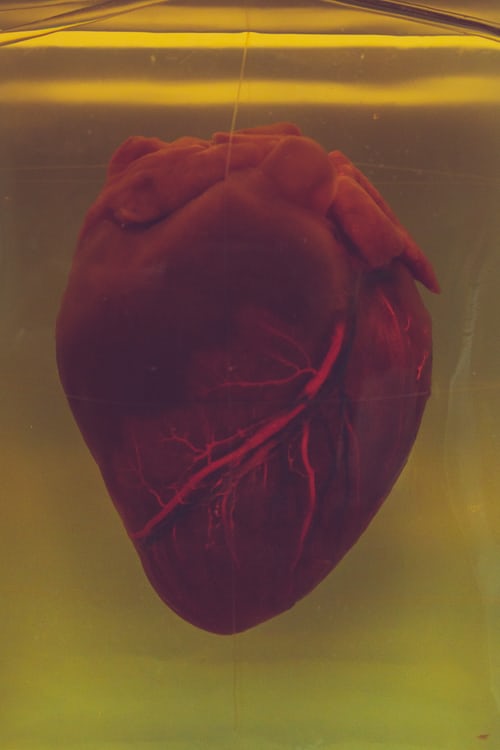


The Chain Must Stop
By Eric Schlosser | Sun July 1, 2001 12:00 AM PST…mother jones
In the beginning he had been fresh and strong, and he had gotten a job the first day; but now he was second-hand, a damaged article, so to speak, and they did not want him… they had worn him out, with their speeding-up and their carelessness, and now they had thrown him away!
–Upton Sinclair, The Jungle (1906)
Kenny Dobbins was hired by the Monfort Beef Company in 1979. He was 24 years old, and 6 foot 5, and had no fear of the hard work in a slaughterhouse. He seemed invincible. Over the next two decades he suffered injuries working for Monfort that would have crippled or killed lesser men. He was struck by a falling 90-pound box of meat and pinned against the steel lip of a conveyor belt. He blew out a disc and had back surgery. He inhaled too much chlorine while cleaning some blood tanks and spent a month in the hospital, his lungs burned, his body covered in blisters. He damaged the rotator cuff in his left shoulder when a 10,000-pound hammer-mill cover dropped too quickly and pulled his arm straight backward. He broke a leg after stepping into a hole in the slaughterhouse’s concrete floor. He got hit by a slow-moving train behind the plant, got bloodied and knocked right out of his boots, spent two weeks in the hospital, then returned to work. He shattered an ankle and had it mended with four steel pins. He got more bruises and cuts, muscle pulls and strains than he could remember.
Despite all the injuries and the pain, the frequent trips to the hospital and the metal brace that now supported one leg, Dobbins felt intensely loyal to Monfort and Con-Agra, its parent company. He’d left home at the age of 13 and never learned to read; Monfort had given him a steady job, and he was willing to do whatever the company asked. He moved from Grand Island, Nebraska, to Greeley, Colorado, to help Monfort reopen its slaughterhouse there without a union. He became an outspoken member of a group formed to keep union organizers out. He saved the life of a fellow worker—and was given a framed certificate of appreciation. And then, in December 1995, Dobbins felt a sharp pain in his chest while working in the plant. He thought it was a heart attack. According to Dobbins, the company nurse told him it was a muscle pull and sent him home. It was a heart attack, and Dobbins nearly died. While awaiting compensation for his injuries, he was fired. The company later agreed to pay him a settlement of $35,000.
Today Kenny Dobbins is disabled, with a bad heart and scarred lungs. He lives entirely off Social Security payments. He has no pension and no health insurance. His recent shoulder surgery—stemming from an old injury at the plant and costing more than $10,000—was paid by Medicare. He now feels angry beyond words at ConAgra, misused, betrayed. He’s embarrassed to be receiving public assistance. “I’ve never had to ask for help before in my life,” Dobbins says. “I’ve always worked. I’ve worked since I was 14 years old.” In addition to the physical pain, the financial uncertainty, and the stress of finding enough money just to pay the rent each month, he feels humiliated.
What happened to Kenny Dobbins is now being repeated, in various forms, at slaughterhouses throughout the United States. According to the Bureau of Labor Statistics, meatpacking is the nation’s most dangerous occupation. In 1999, more than one-quarter of America’s nearly 150,000 meatpacking workers suffered a job-related injury or illness. The meatpacking industry not only has the highest injury rate, but also has by far the highest rate of serious injury—more than five times the national average, as measured in lost workdays. If you accept the official figures, about 40,000 meatpacking workers are injured on the job every year. But the actual number is most likely higher. The meatpacking industry has a well-documented history of discouraging injury reports, falsifying injury data, and putting injured workers back on the job quickly to minimize the reporting of lost workdays.
Over the past four years, I’ve met scores of meatpacking workers in Nebraska, Colorado, and Texas who tell stories of being injured and then discarded by their employers. Like Kenny Dobbins, many now rely on public assistance for their food, shelter, and medical care. Each new year throws more injured workers on the dole, forcing taxpayers to subsidize the meatpacking industry’s poor safety record. No government statistics can measure the true amount of pain and suffering in the nation’s meatpacking communities today
A list of accident reports filed by the Occupational Safety and Health Administration gives a sense of the dangers that workers now confront in the nation’s meatpacking plants. The titles of these OSHA reports sound more like lurid tabloid headlines than the headings of sober government documents: Employee Severely Burned After Fuel From His Saw Is Ignited. Employee Hospitalized for Neck Laceration From Flying Blade. Employee’s Finger Amputated in Sausage Extruder. Employee’s Finger Amputated in Chitlin Machine. Employee’s Eye Injured When Struck by Hanging Hook. Employee’s Arm Amputated in Meat Auger. Employee’s Arm Amputated When Caught in Meat Tenderizer. Employee Burned in Tallow Fire. Employee Burned by Hot Solution in Tank. One Employee Killed, Eight Injured by Ammonia Spill. Employee Killed When Arm Caught in Meat Grinder. Employee Decapitated by Chain of Hide Puller Machine. Employee Killed When Head Crushed by Conveyor. Employee Killed When Head Crushed in Hide Fleshing Machine. Employee Killed by Stun Gun. Caught and Killed by Gut-Cooker Machine.
The most dangerous plants are the ones where cattle are slaughtered. Poultry slaughterhouses are somewhat safer because they are more highly mechanized; chickens have been bred to reach a uniform size at maturity. Cattle, however, vary enormously in size, shape, and weight when they arrive at a slaughterhouse. As a result, most of the work at a modern beef plant is still performed by hand. In the age of the space station and the microchip, the most important slaughterhouse tool is a well-sharpened knife.
Thirty years ago, meatpacking was one of the highest-paid industrial jobs in the United States, with one of the lowest turnover rates. In the decades that followed the 1906 publication of The Jungle, labor unions had slowly gained power in the industry, winning their members good benefits, decent working conditions, and a voice in the workplace. Meatpacking jobs were dangerous and unpleasant, but provided enough income for a solid, middle-class life. There were sometimes waiting lists for these jobs. And then, starting in the early 1960s, a company called Iowa Beef Packers (IBP) began to revolutionize the industry, opening plants in rural areas far from union strongholds, recruiting immigrant workers from Mexico, introducing a new division of labor that eliminated the need for skilled butchers, and ruthlessly battling unions. By the late 1970s, meatpacking companies that wanted to compete with IBP had to adopt its business methods—or go out of business. Wages in the meatpacking industry soon fell by as much as 50 percent. Today meatpacking is one of the nation’s lowest-paid industrial jobs, with one of the highest turnover rates. The typical plant now hires an entirely new workforce every year or so. There are no waiting lists at these slaughterhouses today. Staff shortages have become an industrywide problem, making the work even more dangerous.
In a relatively brief period of time, the meatpacking industry also became highly centralized and concentrated, giving enormous power to a few large agribusiness firms. In 1970, the top four meatpackers controlled just 21 percent of the beef market. Today the top four—IBP, ConAgra, Excel (a subsidiary of Cargill), and National Beef—control about 85 percent of the market. While the meatpackers have grown more powerful, the unions have grown much weaker. Only half of IBP’s workers belong to a union, allowing that company to set the industry standard for low wages and harsh working conditions. Given the industry’s high turnover rates, it is a challenge for a union simply to remain in a meatpacking plant, since every year it must gain the allegiance of a whole new set of workers.
In some American slaughterhouses, more than three-quarters of the workers are not native English speakers; many can’t read any language, and many are illegal immigrants. A new migrant industrial workforce now circulates through the meatpacking towns of the High Plains. A wage of $9.50 an hour seems incredible to men and women who come from rural areas in Mexico where the wages are $7 a day. These manual laborers, long accustomed to toiling in the fields, are good workers. They’re also unlikely to complain or challenge authority, to file lawsuits, organize unions, fight for their legal rights. They tend to be poor, vulnerable, and fearful. From the industry’s point of view, they are ideal workers: cheap, largely interchangeable, and disposable.
One of the crucial determinants of a slaughterhouse’s profitability is also responsible for many of its greatest dangers: the speed of the production line. Once a plant is fully staffed and running, the more head of cattle slaughtered per hour, the less it costs to process each one. If the production line stops, for any reason, costs go up. Faster means cheaper—and more profitable. The typical line speed in an American slaughterhouse 25 years ago was about 175 cattle per hour. Some line speeds now approach 400 cattle per hour. Technological advances are responsible for part of the increase; the powerlessness of meatpacking workers explains the rest. Faster also means more dangerous.
When hundreds of workers stand closely together, down a single line, wielding sharp knives, terrible things can happen when people feel rushed. The most common slaughterhouse injury is a laceration. Workers stab themselves or stab someone nearby. They struggle to keep up with the pace as carcasses rapidly swing toward them, hung on hooks from a moving, overhead chain. All sorts of accidents—involving power tools, saws, knives, conveyor belts, slippery floors, falling carcasses—become more likely when the chain moves too fast. One slaughterhouse nurse told me she could always tell the line speed by the number of people visiting her office.
The golden rule in meatpacking plants is “The Chain Will Not Stop.” USDA inspectors can shut down the line to ensure food safety, but the meatpacking firms do everything possible to keep it moving at top speed. Nothing stands in the way of production, not mechanical failures, breakdowns, accidents. Forklifts crash, saws overheat, workers drop knives, workers get cut, workers collapse and lie unconscious on the floor, as dripping carcasses sway past them, and the chain keeps going. “The chain never stops,” Rita Beltran, a former IBP worker told me. “I’ve seen bleeders, and they’re gushing because they got hit right in the vein, and I mean they’re almost passing out, and here comes the supply guy again, with the bleach, to clean the blood off the floor, but the chain never stops. It never stops.”
Albertina Rios was a housewife in Mexico before coming to America nearly 20 years ago and going to work for IBP in Lexington, Nebraska. While bagging intestines, over and over, for eight hours a day, Rios soon injured her right shoulder. She was briefly placed on light duty, but asked to be assigned to a higher-paying position trimming heads, an even more difficult job that required moving heavy baskets of meat all day. When she complained about the pain to her supervisor, she recalls, he accused her of being lazy. Rios eventually underwent surgery on the shoulder, as well as two operations on her hands for carpal tunnel syndrome, a painful and commonplace injury caused by hours of repetitive motion.
Some of the most debilitating injuries in the meatpacking industry are also the least visible. Properly sutured, even a deep laceration will heal. The cumulative trauma injuries that meatpacking workers routinely suffer, however, may cause lifelong impairments. The strict regimentation and division of labor in slaughterhouses means that workers must repeat the same motions again and again throughout their shift. Making the same knife cut 10,000 times a day or lifting the same weight every few seconds can cause serious injuries to a person’s back, shoulders, or hands. Aside from a 15-minute rest break or two and a brief lunch, the work is unrelenting. Even the repetition of a seemingly harmless task can lead to pain. “If you lightly tap your finger on a desk a few times, it doesn’t hurt,” an attorney for injured workers told me. “Now try tapping it for eight hours straight, and see how that feels.”
The rate of cumulative trauma injuries in meatpacking is the highest of any American industry. It is about 33 times higher than the national average. According to federal statistics, nearly 1 out of every 10 meatpacking workers suffers a cumulative trauma injury every year. In fact, it’s very hard to find a meatpacking worker who’s not suffering from some kind of recurring pain. For unskilled, unschooled manual laborers, cumulative trauma injuries such as disc problems, tendonitis, and “trigger finger” (a syndrome in which a finger becomes stuck in a curled position) can permanently limit the ability to earn a decent income. Much of this damage will never be healed.
After interviews with many slaughterhouse workers who have cumulative trauma injuries, there’s one image that stays with me. It’s the sight of pale white scars on dark skin. Ana Ramos came from El Salvador and went to work at the same IBP plant as Albertina Rios, trimming hair from the meat with scissors. Her fingers began to lock up; her hands began to swell; she developed shoulder problems from carrying 30- to 60-pound boxes. She recalls going to see the company doctor and describing the pain, only to be told the problem was in her mind. She would leave the appointments crying. In January 1999, Ramos had three operations on the same day—one on her shoulder, another on her elbow, another on her hand. A week later, the doctor sent her back to work. Dora Sanchez, who worked at a different IBP plant, complained for months about soreness in her hands. She says the company ignored her. Sanchez later had surgery on both hands. She now has a “spinal cord stimulator,” an elaborate pain-reduction system implanted in her body, controlled from a small box under the skin on her hip. She will need surgery to replace the batteries every six or seven years.
Cumulative trauma injuries may take months or even years to develop; other slaughterhouse injuries can happen in an instant. Lives are forever changed by a simple error, a wrong move, a faulty machine. Raul Lopez worked as a carpenter in Mexico, making tables, chairs, and headboards, before coming to the United States in 1995 to do construction work in Santa Fe, New Mexico. He was 20 years old at the time, and after laying concrete foundations for two years, he moved to Greeley and got a job at the Monfort Beef plant, where the pay was higher. He trimmed hides after they came up from the kill floor, cutting off the legs and heads, lifting them up with mechanical assistance, and placing the hides on a hook. It was one of the most difficult jobs in the plant. Each hide weighed about 180 pounds, and he lifted more than 300 of them every hour. He was good at his job and became a “floater,” used by his supervisor to fill in for absent workers. Lopez’s hands and shoulders were sore at the end of the day, but for two years and two months he suffered no injuries
At about seven in the morning on November 22, 1999, Lopez was substituting for an absent worker, standing on a four-foot-high platform, pulling hides from a tank of water that was washing blood and dirt off them. The hides were suspended on hooks from a moving chain. The room was cold and foggy, and it was difficult to see clearly. There were problems somewhere up ahead on the line, but the chain kept moving, and Lopez felt pressure to keep up. One of his steel-mesh gloves suddenly got snagged in the chain, and it dragged him down the line toward bloody, filthy water that was three feet deep. Lopez grabbed the chain with his free hand and screamed for help. Someone ran to another room and took an extraordinary step: He shut down the line. The arm caught in the chain, Lopez’s left one, was partially crushed. He lost more than three pints of blood and almost bled to death. He was rushed to a hospital in Denver, endured the first of many operations, and survived. Five months later, Lopez was still in enormous pain and heavily medicated. Nevertheless, he says, a company doctor ordered him back to work. His previous supervisor no longer worked at the plant. Lopez was told that the man had simply walked off the job and quit one day, feeling upset about the accident.
I recently visited Lopez on a lovely spring afternoon. His modest apartment is just a quarter mile down the road from the slaughterhouse. The living room is meticulously neat and clean, filled with children’s toys and a large glass display case of Native American curios. Lopez now works in the nurse’s office at the plant, handling files. Every day he sees how injured workers are treated—given some Tylenol and then sent back to the line—and worries that ConAgra is now planning to get rid of him. His left arm hangs shriveled and lifeless in a sling. It is a deadweight that causes severe pain in his neck and back. Lopez wants the company to pay for an experimental operation that might restore some movement to the arm. The alternative could be amputation. ConAgra will say only that it is weighing the various medical options. Lopez is 26 years old and believes his arm will work again. “Every night, I pray for this operation,” he says, maintaining a polite and dignified facade. A number of times during our conversation, he suddenly gets up and leaves the room. His wife, Silvia, stays behind, sitting across from me on the couch, holding their one-year-old son in her arms. Their three-year-old daughter happily wanders in and out to the porch. Every time the front door swings open for her, a light breeze from the north brings the smell of death into the room.
The meatpacking companies refuse to comment on the cases of individual employees like Raul Lopez, but insist they have a sincere interest in the well-being of their workers. Health and safety, they maintain, are the primary concerns of every supervisor, foreman, nurse, medical claims examiner, and company-approved doctor. “It is in our best interest to take care of our workers and ensure that they are protected and able to work every day,” says Janet M. Riley, a vice president of the American Meat Institute, the industry’s trade association. “We are very concerned about improving worker safety. It is absolutely to our benefit.”
The validity of such claims is measured best in Texas, where the big meatpackers have the most freedom to do as they please. In many ways, the true heart of the industry lies in Texas. About one-quarter of the cattle slaughtered every year in the United States—roughly 9 million animals—are processed in Texas meatpacking plants. One of the state’s U.S. senators, Phil Gramm, is the industry’s most powerful ally in Congress. His wife, Wendy Lee, sits on the board of IBP. The state courts and the legislature have also been friendly to the industry. Indeed, many injured meatpacking workers in Texas now face a system that has been devised not only to prevent any independent scrutiny of their medical needs, but also to prevent them from suing for on-the-job injuries.
In the early years of the 20th century, public outrage over the misfortune of industrial workers hurt on the job prompted legislatures throughout the United States to enact workers’ compensation laws. Workers’ comp was intended to be a form of mandatory, no-fault insurance. In return for surrendering the legal right to sue their employer for damages, injured workers were guaranteed immediate access to medical care, steady income while they recuperated, and disability payments. All 50 states eventually passed workers’ comp legislation of one sort or another, creating systems in which employers generally obtained private insurance and any disputes were resolved by publicly appointed officials.
Recent efforts by business groups to “reform” workers’ comp have made it more difficult for injured employees to obtain payments. In Colorado, the first “workers’ comp reform” bill was sponsored in 1990 by Tom Norton, a conservative state senator from Greeley. His wife, Kay, was a vice president at ConAgra Red Meat at the time. Under Colorado’s new law, which places limits on compensation, the maximum payment for losing an arm is $37,738. Losing a digit brings you anywhere from $2,400 to $9,312, depending on whether it’s a middle finger, a pinkie, or a thumb.
The meatpacking companies have a vested interest in keeping workers’ comp payments as low as possible. IBP, Excel, and ConAgra are all self-insured. Every dime spent on injured workers in such programs is one less dime in profits. Slaughterhouse supervisors and foremen, whose annual bonuses are usually tied to the injury rate of their workers, often discourage people from reporting injuries or seeking first aid. The packinghouse culture encourages keeping quiet and laboring in pain. Assignments to “light duty” frequently punish an injured worker by cutting the hourly wage and forbidding overtime. When an injury is visible and impossible to deny—an amputation, a severe laceration, a chemical burn—companies generally don’t contest a worker’s claim or try to avoid medical payments. But when injuries are less obvious or workers seem uncooperative, companies often block every attempt to seek benefits. It can take injured workers as long as three years to get their medical bills paid. From a purely financial point of view, the company has a strong incentive to delay every payment in order to encourage a less-expensive settlement. Getting someone to quit is even more profitable—an injured worker who walks away from the job is no longer eligible for any benefits. It is not uncommon to find injured workers assigned to meaningless or unpleasant tasks as a form of retaliation, a clear message to leave. They are forced to sit all day watching an emergency exit or to stare at gauges amid the stench in rendering.
In Texas, meatpacking firms don’t have to manipulate the workers’ comp system—they don’t even have to participate in it. The Texas Workers Compensation Reform Act of 1989 allowed private companies to drop out of the state’s workers’ comp system. Although the law gave injured workers the right to sue employers that had left the system, that provision was later rendered moot. When a worker is injured at an IBP plant in Texas, for example, he or she is immediately presented with a waiver. It reads: “I have been injured at work and want to apply for the payments offered by IBP to me under its Workplace Injury Settlement Program. To qualify, I must accept the rules of the Program. I have been given a copy of the Program summary. I accept the Program.”
Signing the waiver means forever surrendering your right—and the right of your family and heirs—to sue IBP on any grounds. Workers who sign the waiver may receive immediate medical care under IBP’s program. Or they may not. Once they sign, IBP and its company-approved doctors have control over the worker’s job-related medical treatment—for life. Under the program’s terms, seeking treatment from an independent physician can be grounds for losing all medical benefits. If the worker objects to any decision, the dispute can be submitted to an IBP-approved arbitrator. The company has said the waivers are designed “to more effectively ensure quality medical care for employees injured on the job.” Workers who refuse to sign the IBP waiver not only risk getting no medical care from the company, but also risk being fired on the spot. In February 1998, the Texas Supreme Court ruled that companies operating outside the state’s workers’ comp system can fire workers simply because they’re injured.
Today, an IBP worker who gets hurt on the job in Texas faces a tough dilemma: Sign the waiver, perhaps receive immediate medical attention, and remain beholden, forever, to IBP. Or refuse to sign, risk losing your job, receive no help with your medical bills, file a lawsuit, and hope to win a big judgment against the company someday. Injured workers almost always sign the waiver. The pressure to do so is immense. An IBP medical case manager will literally bring the waiver to a hospital emergency room in order to obtain an injured worker’s signature. Karen Olsson, in a fine investigative piece for the Texas Observer, described the lengths to which Terry Zimmerman, one of IBP’s managers, will go to get a signed waiver. When Lonita Leal’s right hand was mangled by a hamburger grinder at the IBP plant in Amarillo, Zimmerman talked her into signing the waiver with her left hand, as she waited in the hospital for surgery. When Duane Mullin had both hands crushed in a hammer mill at the same plant, Zimmerman persuaded him to sign the waiver with a pen held in his mouth.
Unlike IBP, Excel does not need to get a signed waiver after an injury in Texas. Its waiver is included in the union contract that many workers unwittingly sign upon being hired. Once they’re injured, these workers often feel as much anger toward the union as they do toward their employer. In March, the Texas Supreme Court upheld the legality of such waivers, declaring that the “freedom of contract” gave Americans the ability to sign away their common-law rights. Before the waiver became part of the standard contract, Excel was held accountable, every so often, for its behavior.
Hector Reyes is one of the few who has managed to do something productive with his sense of betrayal. For 25 years, his father was a maintenance worker at the Excel plant in Friona, Texas, a couple of hours southwest of Amarillo. As a teen-ager, Reyes liked to work in the plant’s warehouse, doing inventory. He’d grown up around the slaughterhouse. He later became a Golden Gloves champion boxer and went to work for Excel in 1997, at the age of 25, to earn money while he trained. One day he was asked to clean some grease from the blowers in the trolley room. Reyes did as he was told, climbing a ladder in the loud, steam-filled room and wiping the overhead blowers clean. But one of the blowers lacked a proper cover—and in an instant the blade shredded four of the fingers on Reyes’ left hand. He climbed down the ladder and yelled for help, but nobody would come near him, as blood flew from the hand. So Reyes got himself to the nurse’s office, where he was immediately asked to provide a urine sample. In shock and in pain, he couldn’t understand why they needed his urine so badly. Try as he might, he couldn’t produce any. The nurse called an ambulance, but said he wouldn’t receive any painkillers until he peed in a cup. Reyes later realized that if he’d failed the urine test, Excel would not have been obligated to pay any of his medical bills. This demand for urine truly added insult to injury: Reyes was in training and never took drugs. He finally managed to urinate and received some medication. The drug test later came back negative.
On his fourth night in a Lubbock hospital, Reyes was awakened around midnight and told to report for work the next morning in Friona, two hours away. His wife would have to drive, but she was three months pregnant. Reyes refused to leave the hospital until the following day. For the next three months, he simply sat in a room at the Excel plant with other injured workers or filed papers for eight hours a day, then drove to Lubbock for an hour of physical therapy and an hour of wound cleaning before heading home. “You’ve already cost the company too much money,” he recalls one supervisor telling him. Reyes desperately wanted to quit but knew he’d lose all his medical benefits if he did. He became suicidal, despondent about the end of his boxing career and his disfigurement. Since the union had not yet included a waiver in its Excel contract, Reyes was able to sue the company for failing to train him properly and for disregarding OSHA safety guidelines. In 1999, he won a rare legal victory: $879,312.25 in actual damages and $1 million in punitive damages. Under the current Excel contract, that sort of victory is impossible to achieve.
Federal safety laws were intended to protect workers from harm, regardless of the vagaries of state laws like those in Texas. OSHA is unlikely, however, to do anything for meatpacking workers in the near future. The agency has fewer than 1,200 inspectors to examine the safety risks at the nation’s roughly 7 million workplaces. The maximum OSHA fine for the death of a worker due to an employer’s willful negligence is $70,000—an amount that hardly strikes fear in the hearts of agribusiness executives whose companies have annual revenues that are measured in the tens of billions. One of President George W. Bush’s first acts in office was to rescind an OSHA ergonomics standard on repetitive-motion injuries that the agency had been developing for nearly a decade. His move was applauded by IBP and the American Meat Institute.
The new chairman of the House Subcommittee on Workforce Protections, which oversees all legislation pertaining to OSHA, is Rep. Charles Norwood, a Republican from Georgia. Norwood was an outspoken supporter of the OSHA Reform Act of 1997—a bill that would have effectively abolished the agency. Norwood, a former dentist, became politically active in the early 1990s out of a sense of outrage that OSHA regulations designed to halt the spread of AIDS were forcing him to wear fresh rubber gloves for each new patient. He has publicly suggested that many workers get repetitive-stress injuries not from their jobs, but from skiing and playing too much tennis.
For Kevin Glasheen, one of the few Texas attorneys willing to battle IBP, the plight of America’s meatpacking workers is “a fundamental failure of capitalism.” By failing to pay the medical bills of injured workers, he says, large meatpackers are routinely imposing their business costs on the rest of society, much as utilities polluted the air a generation ago without much regard to the consequences for those who breathed it.
Rod Rehm, an attorney who defends many Latino meatpacking workers in Nebraska, believes that two key changes could restore the effectiveness of most workers’ comp plans. Allowing every worker to select his or her own physician would liberate medical care from the dictates of the meatpacking companies and the medical staff they control. More important, Rehm argues, these companies should not be permitted to insure themselves. If independent underwriters had to insure the meatpackers, the threat of higher insurance premiums would quickly get the attention of the meatpacking industry—and force it to take safety issues seriously.
Until fundamental changes are made, the same old stories will unfold. Michael Glover is still awaiting payment from IBP, his employer for more than two decades. For 16 of those years, Glover worked as a splitter in the company’s Amarillo plant. Every 20 to 30 seconds, a carcass would swing toward him on a chain. He would take “one heavy heavy power saw” and cut upward, slicing the animal in half before it went into the cooler. The job took strength, agility, and good aim. The carcasses had to be sliced exactly through the middle. One after another they came at him, about a thousand pounds each, all through the day.
On the morning of September 30, 1996, after splitting his first carcass, Glover noticed vibrations in the steel platform beneath him. A maintenance man checked the platform and found a bolt missing, but told Glover it was safe to keep working until it was replaced. Moments later, the platform collapsed as Glover was splitting a carcass. He dropped about seven feet and shattered his right knee. While he lay on the ground and workers tried to find help, the chain kept going as two other splitters picked up the slack. Glover was taken in a wheelchair to the nurse’s station, where he went into shock in the hallway and fell unconscious. He sat in that hall for almost four hours before being driven to an outpatient clinic. A full seven hours after the accident, Glover was finally admitted to a hospital. He spent the next six days there. His knee was too badly shattered to be repaired; no screws would hold; the bone was broken into too many pieces
An artificial knee was later inserted. Glover suffered through enormous pain and a series of complications: blood clots, ulcers, phlebitis. Nevertheless, he says, IBP pressured him to return to work in a wheelchair during the middle of winter. On snowy days, several men had to carry him into the plant. Once it became clear that his injury would never fully heal, Glover thinks IBP decided to get rid of him. But he refused to quit and lose all his medical benefits. He was given a series of humiliating jobs. For a month, Glover sat in the men’s room at the plant for eight hours a day, ordered by his supervisor to make sure no dirty towels or toilet paper remained on the floor.
“Michael Glover played by IBP’s rules,” says his attorney, James H. Woods, a fierce critic of the Texas workers’ comp system. The day of his accident, Glover had signed the waiver, surrendering any right to sue the company. Instead, he filed for arbitration under IBP’s Workplace Injury Settlement Program. Last year, on November 3, Glover was fired by IBP. Twelve days later, his arbitration hearing convened. The arbitrator, an Amarillo lawyer named Tad Fowler, was selected by IBP. Glover sought money for his pain and suffering, as well as lifetime payments from the company. He’d always been a hardworking and loyal employee. Now he had no medical insurance. His only income was $250 a week in unemployment. He’d fallen behind in his rent and worried that his family would be evicted from their home.
On December 20, Fowler issued his decision. He granted Glover no lifetime payments but awarded him $350,000 for pain and suffering. Glover was elated, briefly. Even though its workplace-injury settlement program clearly states that “the arbitrator’s decision is final and binding,” the company so far has refused to pay him. IBP claims that by signing the waiver, Glover forfeited any right to compensation for “physical pain, mental anguish, disfigurement, or loss of enjoyment of life.” IBP has even refused to pay its own arbitrator for his services, and Fowler is now suing the company to get his fee. He has been informed that IBP will never hire him again for an arbitration.
Glover’s case is now in federal court. He is a proud man with a strong philosophical streak. He faces the possibility of another knee replacement or of amputation. “How can this company fire me after 23-and-one-half years of service,” he asks, “after an accident due to no fault of my own, and requiring so much radical surgery, months and months of pain and suffering, and nothing to look forward to but more pain and suffering, and refuse to pay me an award accrued through its own program?”
There is no good answer to his question. The simple answer is that IBP can do it because the laws allow them to do it. Michael Glover is just one of thousands of meatpacking workers who’ve been mistreated and then discarded. There is nothing random or inscrutable about their misery; it is the logical outcome of the industry’s practices. A lack of public awareness, a lack of outrage, have allowed these abuses to continue, one after another, with a machine-like efficiency. This chain must be stopped.



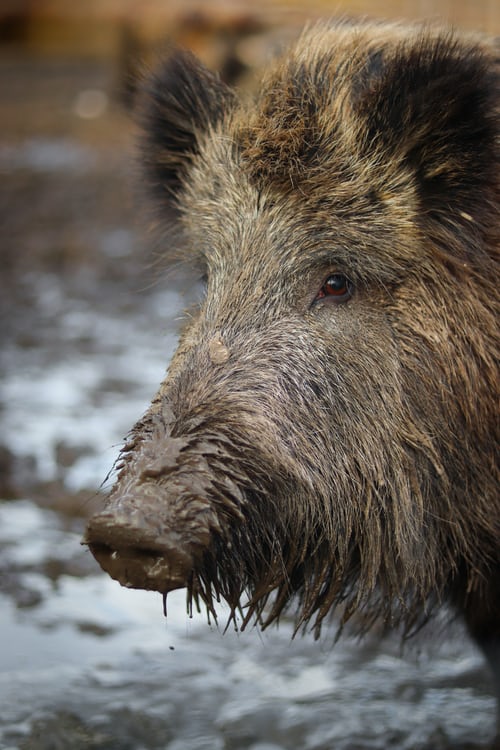

Swine flu hits 7 nations; U.S. fatalities predicted: Containment ‘not feasible’; 4 cases suspected in Arizona
By Ginger Rough – Apr. 29, 2009 12:00 AM
The Arizona Republic
State health officials Tuesday reported four suspected swine-flu cases in Arizona as they prepare for a disease that continues to spread worldwide and has federal officials acknowledging that U.S. deaths are likely.
The Arizona Department of Health Services said it won’t know for certain if any of the patients have a new strain of swine flu until this morning, when the state expects to get results of at least one of the laboratory samples sent to the U.S. Centers for Disease Control and Prevention.
The disclosure came as CDC acting Director Richard Besser warned that the highly contagious disease is likely to cause American fatalities.
“I expect that we will see deaths in this country,” Besser said.
His comments seemed to contrast sharply with the mostly mild reports of the illness here. But his remarks were underscored by an official at the World Health Organization, who said, “Containment of the outbreak is not feasible.”
As the virus makes its way around the globe, the focus in the U.S. and in Arizona has centered on preparedness in the event the outbreak becomes a feared pandemic.
There are now 66 laboratory-confirmed cases of swine flu in the U.S., with 45 of those reported in New York. The rest are in California, Texas, Kansas, Indiana and Ohio.
Worldwide, seven countries confirmed swine flu within their borders, including Canada, New Zealand, Britain, Israel and Spain. Mexico, the epicenter of the outbreak, said there were 159 “probable” deaths from the virus in the past week; about 2,500 people have fallen ill.
President Barack Obama asked Congress on Tuesday for an extra $1.5 billion to help fight the swine-flu outbreak, and California Gov. Arnold Schwarzenegger declared a state of emergency to help coordinate his state’s response to the illness.
Arizona cases
In Arizona, the DHS declined to release any information about the patients in the four suspected swine-flu cases, except to say none of the samples was taken from individuals who were gravely ill or hospitalized.
The four specimens all were classified as “Type A” influenza, which can be found in both humans and animals, but state officials said they couldn’t determine the subtype.
“You could certainly call them suspected (swine flu),” said Will Humble, the department’s acting director.
The DHS isn’t releasing any more information about the patients until it hears back from the CDC.
Locally, early preparedness efforts have focused on quick identification of cases and surveillance. But state officials and hospitals were quick to say Tuesday that they are ready to deal with a much more drastic situation.
Pandemics are defined as a global outbreak of disease from a new virus that spreads easily in the human population, causing serious illness or death.
Pandemics put massive stress on public-health agencies, urgent-care clinics and essential state and city services.
The government estimates a severe flu pandemic could result in as many as 25 percent to 33 percent of American workers being away from their jobs because they were ill or caring for a sick family member.
Arizona Superintendent of Public Instruction Tom Horne sent a memo to school officials Tuesday recommending closure of any campus where swine flu is found. He said the measure may help slow or stop the spread of the virus. Also, the Maricopa County Sheriff’s Office made protective gear available to deputies working on the streets and in jails.
State readiness
Arizona, like other states, was required about three years ago to submit a pandemic-flu plan to the federal government, detailing how it would respond to such a crisis.
In January, federal officials determined Arizona was better prepared to manage an influenza pandemic than the rest of the country, although the blueprint still had some big gaps. One of those was how it would keep government agencies functioning in the face of widespread absenteeism.
Humble said Tuesday that he wasn’t sure if the state Department of Administration has had time to revise those procedures.
The plan
The document, which is posted online on the DHS Web site, is at times both morbid and grim.
It puts much onus on local hospitals, stating that each facility is to have contingency plans for additional security to control panicked crowds and enforce emergency-lockdown procedures.
It also recommends medical centers assess their capacity to handle “refrigeration of deceased persons” and work with local health officials to identify temporary morgue sites.
There are sections that outline a priority system for distributing antiviral medication and vaccines in the likely event of a shortage.
On Tuesday, Humble and other medical experts said they were confident the plan can be executed quickly and efficiently – and modified, if necessary.
“We will do whatever makes good solid public-health sense,” Humble said.
Disaster drills
To prepare for a possible pandemic, Valley hospitals and medical centers have routinely scheduled disaster drills to assess readiness. One of the largest took place in Scottsdale in April 2007.
Wendy Lyons, vice president of community stewardship at Scottsdale Healthcare, said the exercise exposed some key weaknesses in the Valley’s hospital system that have since been fixed.
The drill led to the development of a communications protocol for hospitals, which now participate in a daily conference call with Maricopa County public-health officials.
“The beauty is, we get on the phone and say, ‘This is our current status,’ and maybe it’s Banner Estrella that’s in the most critical condition as far as needing staff or nurses,” Lyons said. “So the rest of us can say, ‘OK, send the resources there.’ “
Cruise lines
Globally, Cuba and Argentina became the first countries to ban flights into Mexico to try to stop the disease spreading to their countries. Carnival, Royal Caribbean and Norwegian Cruise Lines announced they would cancel ports of call in Mexico.
The Associated Press contributed to this article.

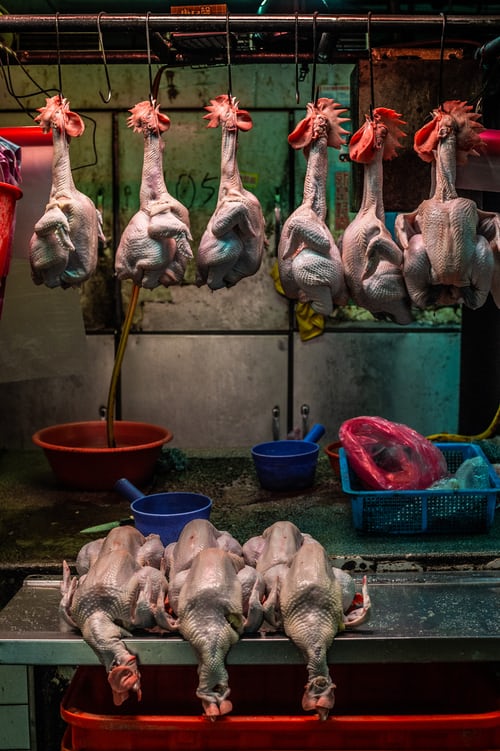


Thirteen Breathtaking Effects of Cutting Back on Meat
By Kathy Freston, AlterNet
Posted on April 22, 2009, Printed on April 23, 2009
My first post on the effect of eating meat on the environment provoked quite a bit of discussion, so in honor of Earth Day, I thought I should follow up with more information about how our natural resources (e.g., air, water, and soil) are depleted and devastated by animal agriculture.
Of course, Earth Day is also a good time to remember that animal agriculture only exists at astronomical levels because people are purchasing vast quantities of chicken, beef, pork, and fish. The market for meat (i.e., we, the consumers) drives the depletion and destruction.
- Excrement produced by chickens, pigs, and other farm animals: 16.6 billion tons per year — more than a million pounds per second (that’s 60 times as much as is produced by the world’s human population — farmed animals produce more waste in one day than the U.S. human population produces in 3 years). This excrement is a major cause of air and water pollution. According to the United Nations: “The livestock sector is… the largest sectoral source of water pollution, contributing to eutrophication, ‘dead’ zones in coastal areas, degradation of coral reefs, human health problems, emergence of antibiotic resistance and many others.”
- Water used for farmed animals and irrigating feed crops: 240 trillion gallons per year — 7.5 million gallons per second (that’s enough for every human to take 8 showers a day, or as much as is used by Europe, Africa, and South America combined). According to the UN: “[t]he water used by the sector exceeds 8 percent of the global human water use.” As just one example, “[O]n average 990 litres of water are required to produce one litre of milk.” So drinking milk instead of tap water requires almost 1,000 times as much water.
- Emissions of greenhouse gases from raising animals for food: The equivalent of 7.8 billion tons of carbon dioxide per year, according to the UN report. Concludes the UN: “The livestock sector is… responsible for 18% of greenhouse gas emissions.” That’s about 40 percent more than all the cars, trucks, planes, trains, and ships in the world combined (transport is 13%). And “The sector emits 37% of anthropogenic methane (with 23 times the global warming potential-or GWP-of CO2)… It emits 65% of anthropogenic nitrous oxide (with 296 times the GWP of CO2). These figures are based on the power of these gases over 100 years; in fact, over 20 years-a more important timeframe for dealing with global warming-methane and nitrous oxide are 72 times and 289 times more warming than CO2. And Dr. Rajendra Pachauri, Chair of the IPCC (which shared the Nobel Peace Prize with Al Gore) has been saying that the 18% figure is probably an underestimate.
- It takes more than 11 times as much fossil fuel to make one calorie of animal protein as it does to make one calorie of plant protein.
- Soil erosion due to growing livestock feed: 40 billion tons per year (or 6 tons/year for every human being on the planet-of course if you don’t eat meat, none of this is attributed to you; if you’re in the U.S. where we eat lots more meat than most of the world, your contribution is many times greater than 6 tons/year). About 60% of soil that is washed away ends up in rivers, streams and lakes, making waterways more prone to flooding and to contamination from soil’s fertilizers and pesticides. Erosion increases the amount of dust carried by wind, polluting the air and carrying infection and disease.
- Land used to raise animals for food: 10 billion acres. According to the UN: “In all, livestock production accounts for 70 percent of all agricultural land and 30 percent of the land surface of the planet.” And “70 percent of previous forested land in the Amazon is occupied by pastures, and feedcrops cover a large part of the remainder.” And “About 20 percent of the world’s pastures and rangelands, with 73 percent of rangelands in dry areas, have been degraded to some extent, mostly through overgrazing, compaction and erosion created by livestock action.”
- According to the UN, animal agriculture is a leading case of water pollution. The main water pollutants in the US are sediments and nutrients. Animal agriculture is responsible for 55 percent of the erosion that causes sedimentation, and for a third of the main nutrient pollutants, nitrogen and phosphorous. On top of that, animal agriculture is the source of more than a third of the United States’ water pollution from pesticides, and half of its water pollution from antibiotics.
- Livestock are also responsible for almost two-thirds of anthropogenic ammonia emissions, which contribute significantly to acid rain and acidification of ecosystems.
- Grain and corn raised for livestock feed that could otherwise feed people, according to the UN: 836 million tons per year (note that the more commonly used figure, 758 million tons, is metric). That’s more than 7 times the amount used for biofuels and is much more than enough to adequately feed the 1.4 billion humans who are living in dire poverty, and the number doesn’t even include the fact that almost all of the global soy crop (about 240 million tons of soy) is also fed to chickens, pigs, and other farmed animals.
- An American saves more global warming pollution by going vegan than by switching their car to a hybrid Prius.
- Razing the Amazon rainforest for pasture and feed crops: 5 million acres of Amazon per year. Former Amazon rainforest converted to raising animals for food since 1970 is more than 90% of all Amazon deforestation since 1970.
- According to the UN: “Indeed, the livestock sector may well be the leading player in the reduction of biodiversity…” And “[l]ivestock now account for about 20 percent of the total terrestrial animal biomass, and the 30 percent of the earth’s land surface that they now pre-empt was once habitat for wildlife.” And “Conservation International has identified 35 global hotspots for biodiversity, characterized by exceptional levels of plant endemism and serious levels of habitat loss. Of these, 23 are reported to be affected by livestock production. An analysis of the authoritative World Conservation Union (IUCN) Red List of Threatened Species shows that most of the world’s threatened species are suffering habitat loss where livestock are a factor.”
- United Nations scientists, in their 408-page indictment of the meat industry, sum up these statistics, pointing out that the meat industry is “one of the … most significant contributors to the most serious environmental problems, at every scale from local to global,” including “problems of land degradation, climate change and air pollution, water shortage and water pollution, and loss of biodiversity.”
Perhaps it’s time to explore vegetarianism. Happy Eating!
© 2009 Independent Media Institute. All rights reserved.
View this story online at: http://www.alternet.org/story/137737/
